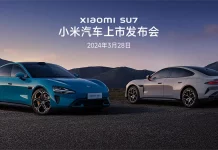Xiaomi is really on it this year. Back in January, it made Redmi a separate brand based on a global business policy decision, and then introduced the Redmi Note 7. The Redmi Go with Android Go was also introduced, and on 20 February the Mi 9 / Mi 9 Transparent Edition / Mi 9 SE trio was launched. And next week, we're looking forward to the Redmi Note 7 Pro event. Exactly 4 days after the Chinese launch, some interesting things were also unveiled at the European event in Barcelona.
The broadcast started at 10:30 a.m. Hungarian time, with a slight delay, and was hosted by Xiaomi Vice President Xiang Wang.
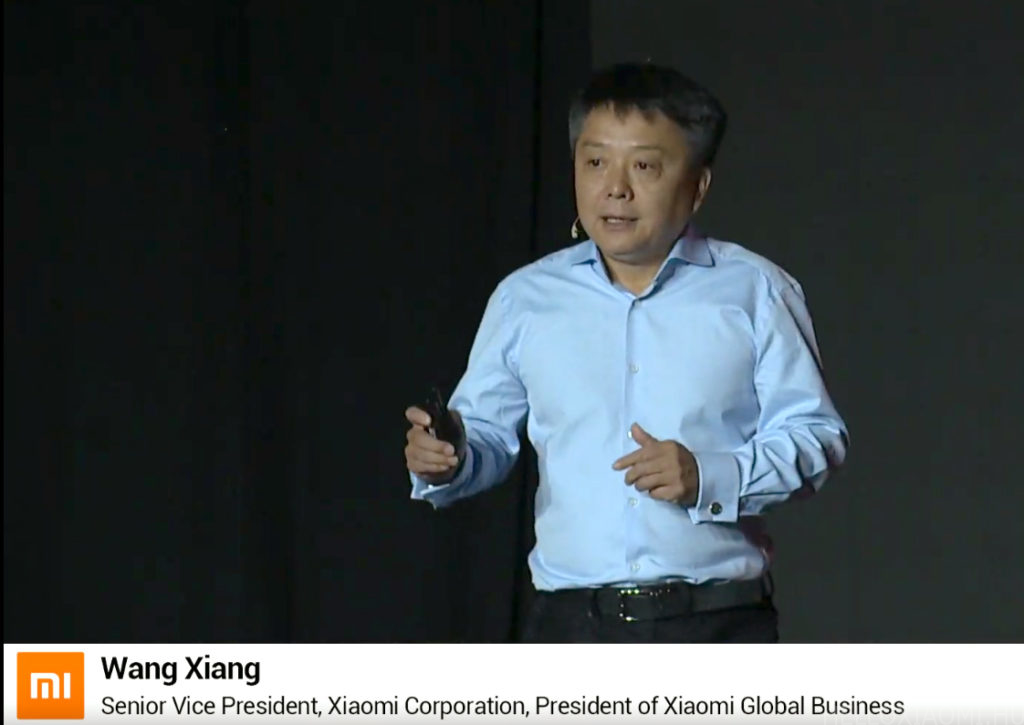 He did not fail to emphasize that Xiaomi is a young manufacturer, having celebrated its 8th anniversary last year. They have a great team worldwide. Xiaomi is the fastest growing young company, with annual revenues of $10 billion (2804 billion forints) in just 4 years.
He did not fail to emphasize that Xiaomi is a young manufacturer, having celebrated its 8th anniversary last year. They have a great team worldwide. Xiaomi is the fastest growing young company, with annual revenues of $10 billion (2804 billion forints) in just 4 years.
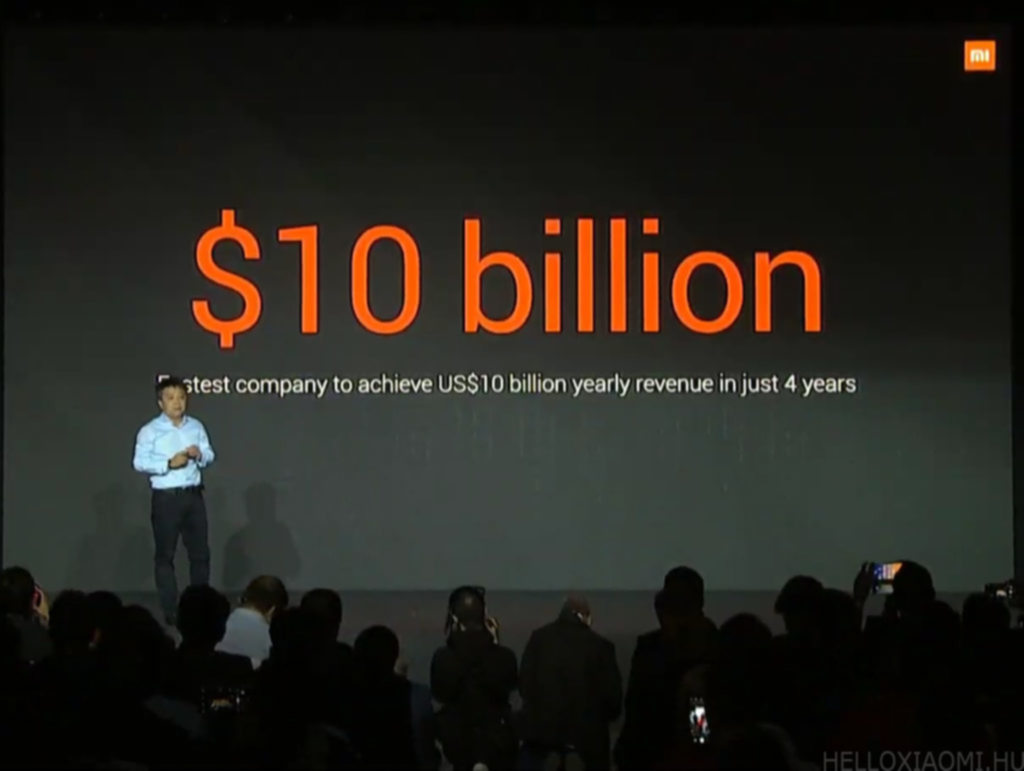
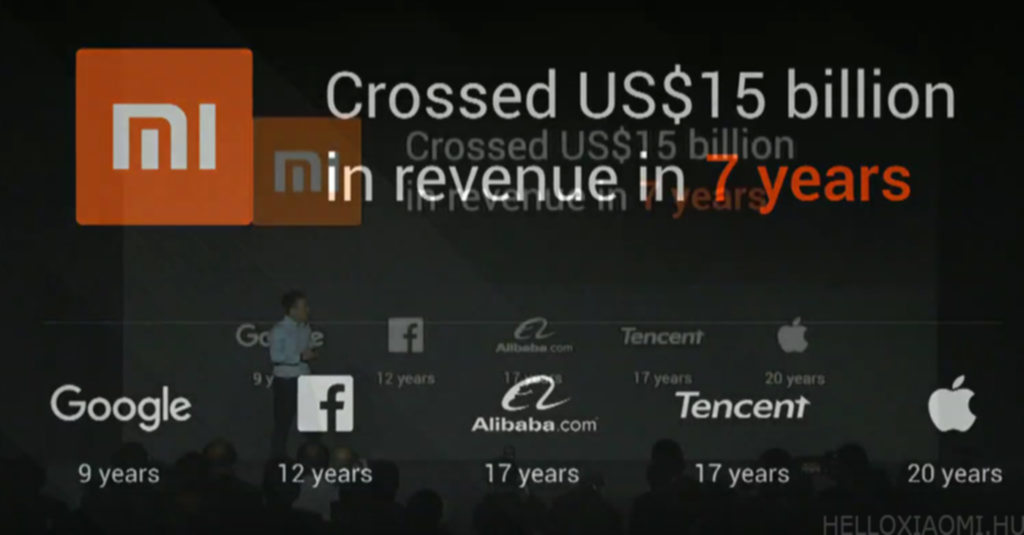 Google reached this level in 9 years, Facebook in 12 and Apple in 20.
Google reached this level in 9 years, Facebook in 12 and Apple in 20.
Xiaomi maintained its 4th place in global sales in 2018, with an increase of 32.2%.
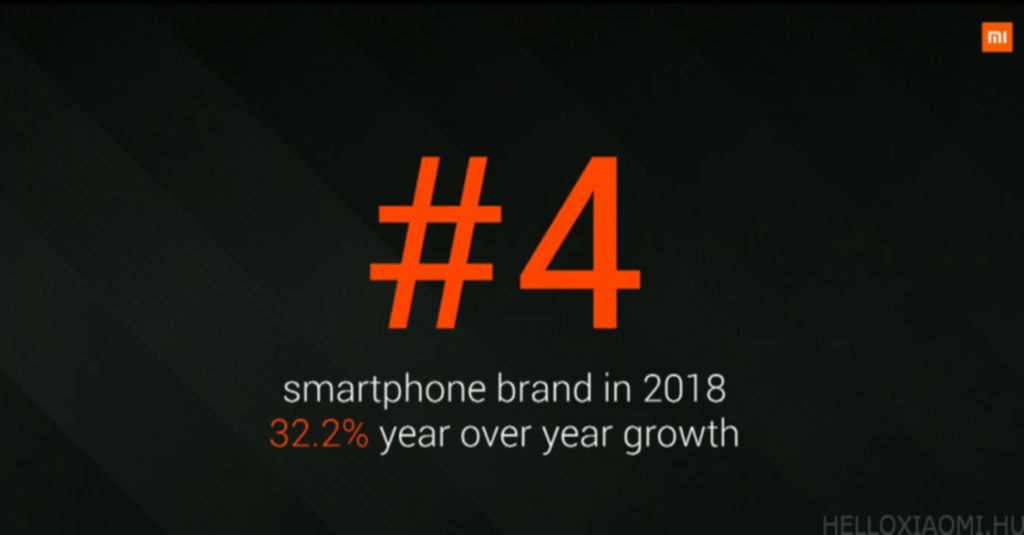 The number of active MIUI users exceeded 224 million.
The number of active MIUI users exceeded 224 million.
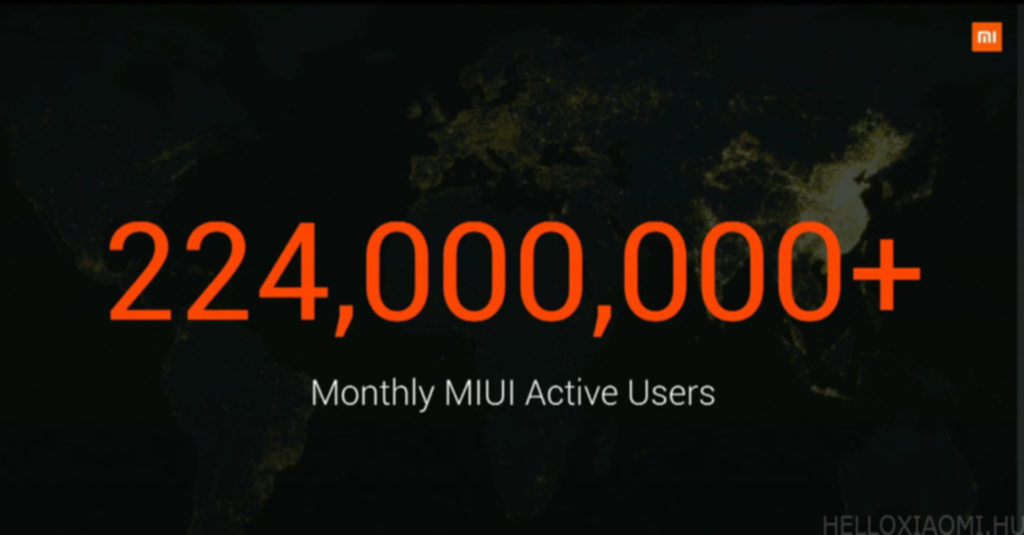 The Mi Store in London also opened in the autumn.
The Mi Store in London also opened in the autumn.

In Spain and Ukraine, Xiaomi is the leading smartphone vendor.
Xiaomi is not only a leader in smartphone sales in some regions, but also has a strong position in IOTP and smart home systems. It is also first among wearable device manufacturers.
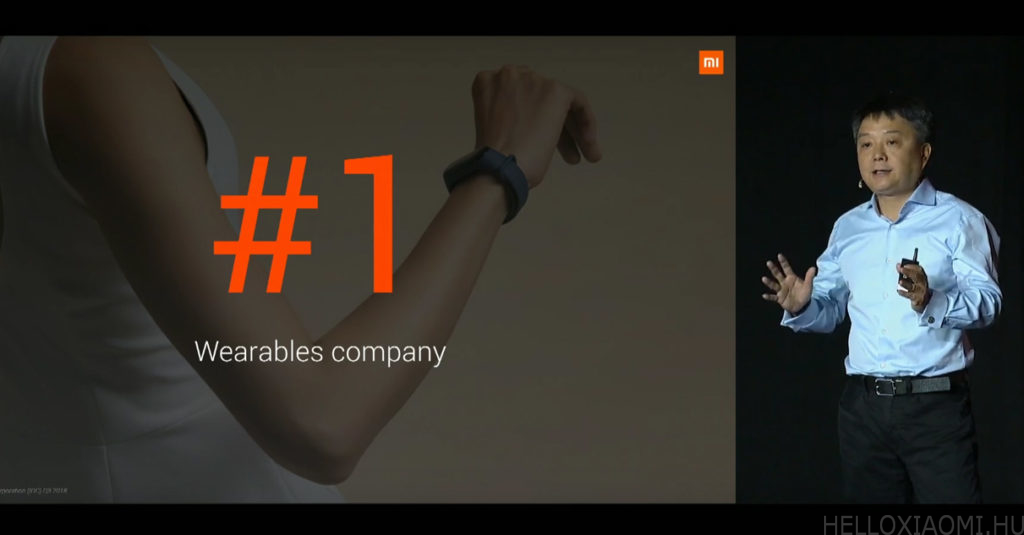 The MiJIa M365 electric scooter has won several awards since its announcement and is currently the most popular electric scooter in several markets.
The MiJIa M365 electric scooter has won several awards since its announcement and is currently the most popular electric scooter in several markets.
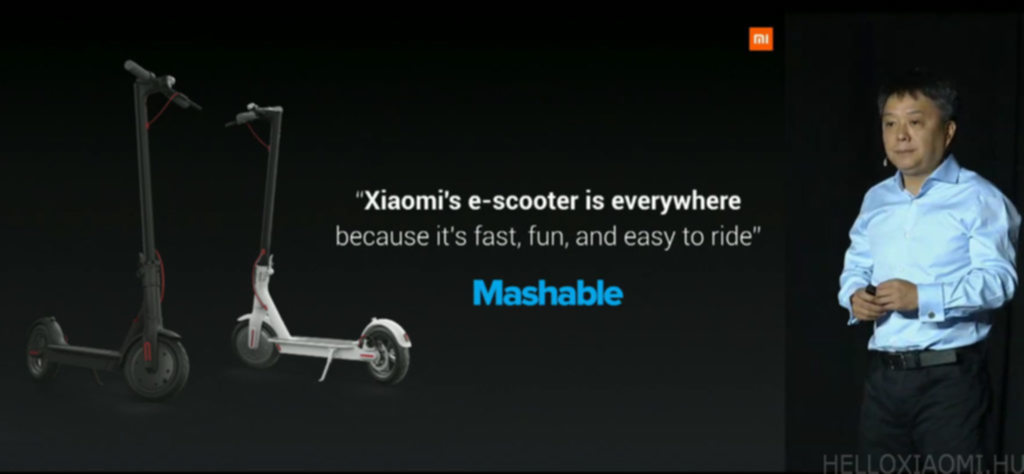
 Sales have exceeded 560,000 units, and with spring approaching, sales could surge again within weeks. It's no coincidence that the Pro version, with an increased range of 45 km, was also unveiled in China.
Sales have exceeded 560,000 units, and with spring approaching, sales could surge again within weeks. It's no coincidence that the Pro version, with an increased range of 45 km, was also unveiled in China.
In China and India, Mi TV is the most popular, leading sales. This is particularly notable in China, where competition is fierce.
The Xiaomi ecosystem has more than 2000 products
 It's huge news that Xiaomi and IKEA have entered into a strategic agreement to develop IoT systems on a global scale.
It's huge news that Xiaomi and IKEA have entered into a strategic agreement to develop IoT systems on a global scale.
 In the field of smart lighting, the company works closely with Philips, and already offers a range of smart light bulbs, table lamps, bedside lamps and ceiling lights.
In the field of smart lighting, the company works closely with Philips, and already offers a range of smart light bulbs, table lamps, bedside lamps and ceiling lights.
 There are over 132 million activated devices in the IoT worldwide.
There are over 132 million activated devices in the IoT worldwide.
 The smart home system is constantly evolving and automation is getting better. Based on the results and demonstrations so far, the system is still working well in China, where Baidu's servers are used for lightning-fast information flow and real automation. In recent months, Yeelight has shown a new direction, as they are officially present in the US. The partnership there is also open to Google Assistant, Apple HomeKit, and Amazon Alexa.
The smart home system is constantly evolving and automation is getting better. Based on the results and demonstrations so far, the system is still working well in China, where Baidu's servers are used for lightning-fast information flow and real automation. In recent months, Yeelight has shown a new direction, as they are officially present in the US. The partnership there is also open to Google Assistant, Apple HomeKit, and Amazon Alexa.
The situation in Europe is not bad either, a range of Súk products is already quite usable in our part of the world.
However, there is currently chaos among Smart Home products. Many Chinese products only work on Chinese servers, while the Global versions are largely only available in Europe. Interoperability is rare, there are few products that work on both servers. The situation was further complicated by the introduction of the Globan Sensor Kit. Apart from the one and a half year delay, only Global products can be connected to it (with one or two exceptions). The Smart Plug is missing, and we can't even use the Chinese one with the Global gateway.
So, for us, the only way to make our homes smarter is to compromise. The EU server is slowly reaching its maximum capacity, it's time to upgrade. So it is useless to have a wide product reach from different channels and an available Chinese server if the EU market only gets a fraction of the total ecosystem. Not to mention the software update glitches.
The Google Assistant control was supposed to be demoed at the event, but probably due to a temporary system failure or the overloaded internet, it didn't really work.
5G
There is no denying that 5G is the future. Not only because of the significant speed increase in mobile internet speeds, but also because of the many areas where 5G can improve (or open up) the exchange of information. It could also help to improve public transport, hospitals, goods transport or even indoor navigation. Everything can be made intelligent, signs can communicate, response times for rescues can be improved, and controls can be made in real time. Technology will also reform the smart home in time.
The technology was demoed by Xiaomi last autumn, but the Mi MIX 3 has only just received actual 5G capability.
The smartphone duo was presented by Donovan Sung, Product Manager at Xiaomi.
Mi MIX 3 5G
The Qualcomm™ Snapdragon 855 processor delivers 5G connectivity to your phone via the X5 5G modem. It will help to significantly speed up download/upload speeds and make simultaneous streaming connectivity available for social platforms and gaming. This is where fast and large memory and back-up storage will be of real importance. 5G is already available in Spain thanks to a few operators, and we expect the first deployment next year. However, this will require operators to carefully review current tariffs, as the current 4G tariffs are still very high for unlimited coverage, and the coverage is not perfect due to the terrain. Let's not even talk about the 800MHz "savings".

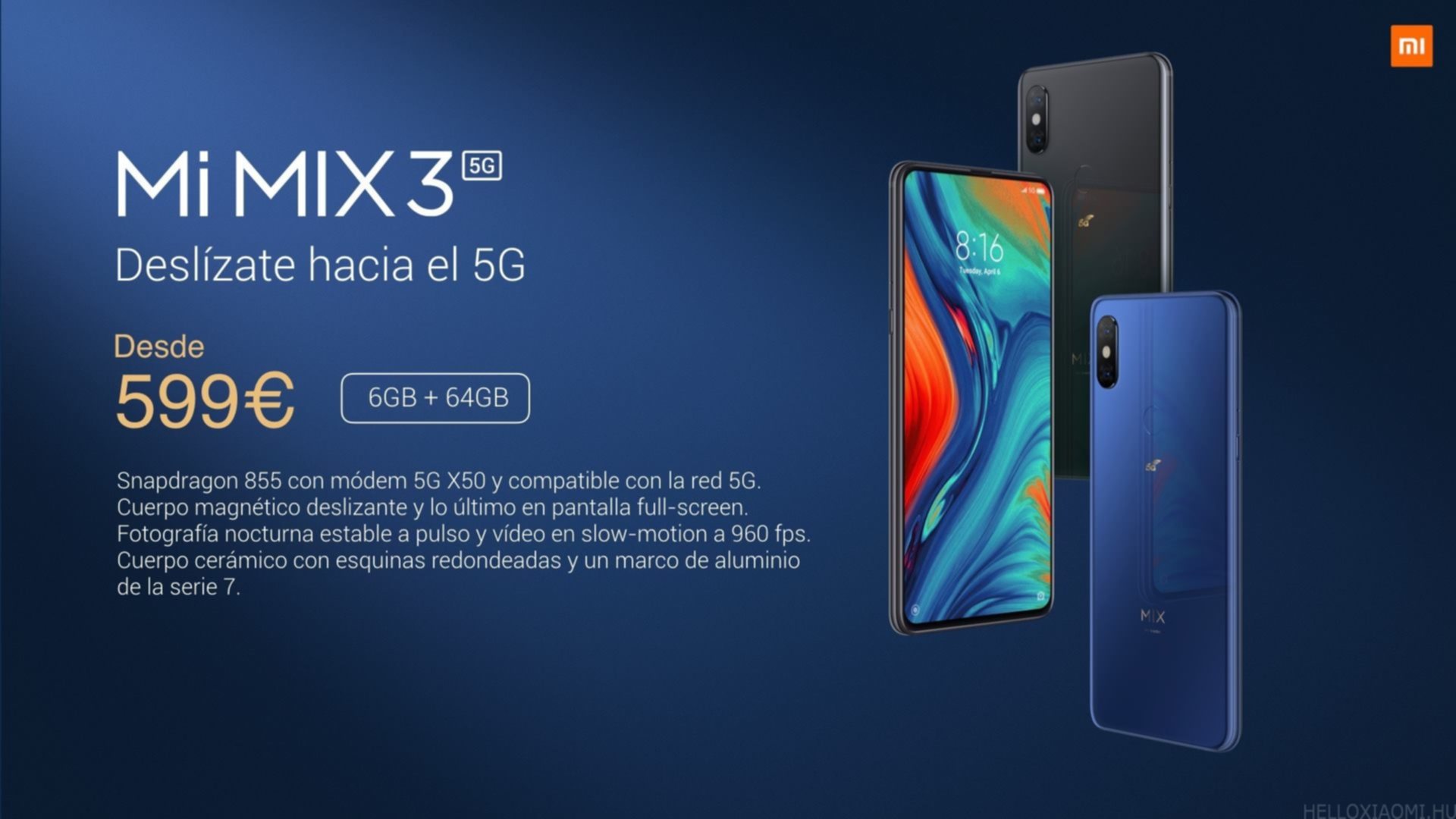
 The Mi MIX 3 5G specification brings the following changes:
The Mi MIX 3 5G specification brings the following changes:
- then 1 mm thicker
- in exchange, the battery capacity has been increased from 3200 to 3800 mAh (although the factory page either misspelled the specifications - it still says 3200 mAh - or made a huge mistake in the press photo)
- Instead of the Snapdragon 845, the X5 gets the fresh SD 855 with a 5G modem (6GHz).
- the weight is not supposed to have increased, although we would expect it to due to the larger battery (we'll weigh it ;) )
Unfortunately, the colour scheme remains two-tone, so we'll have to settle for black and sapphire blue. What's more painful is that the RAM/backup hasn't changed either, with 6+64 GB and 6+128 GB, so don't expect the 8-10 GB RAM of the Chinese MIX 3 in the future either.
For now, the official price in euros is 599 euros, which is approx. 191.000 Ft. This means that we will be able to buy the 6+64 GB version for around that price in a Mi Store at the beginning of May. The price of the 128 GB is not yet known.
Based on the information available so far, the Mi MIX 3 5G could be the cheapest 5G-capable smartphone on the market, as the Samsung S10 5G is currently 2.5x more expensive.
The camera hasn't improved, so the Mi 9 currently beats all versions of the Mi MIX 3. And fast charging hasn't changed either.
Mi 9 Global
 The highlight of the event was the launch of the Mi 9, as no Global version has ever been released so quickly after the Chinese launch.
The highlight of the event was the launch of the Mi 9, as no Global version has ever been released so quickly after the Chinese launch.
I wasn't too surprised, I guess it was predictable that a "weaker" version of the Mi 9 would hit the global market.
The phone's camera was the main focus, and for good reason. If only for a few hours, it took third place in the DxOMark rankings. Overall, it currently still has the third best score in photo capabilities, ahead of only the new Samsung S10 in second place and the Huawei P20 Pro/Mate 20 Pro in first place. In video, however, it has scored so well that it still retains its lead. Congratulations to the developers.
The Mi 9 has beaten big names like the 3x more expensive iPhone XS Max or the Galaxy Note 9+.
Key features of the Mi 9 camera:
- Above the Telephoto Sensor: 12 MP 1/3.4-inch Samsung S5K3M5 sensor with 1.0µm pixels, f/2.2 aperture lens, 50mm focal length
- Below PDAF/laser autofocus
- Primary sensor in the centre: 48 MP 1/2-inch Sony IMX586 quad sensor, 0.8 µm pixels, f/1.75 aperture (6P) lens, 26 mm equivalent focal length
- And below, the Super Wide Angle Sensor: 16 MP 1/3-inch Sony IMX481 sensor, f/2.2 aperture lens, 17 mm focal length (117° angle of view.)
- 4 cm macro mode (very rare among phones)
- The double (monochrome) LED flash is located separately under the camera unit
- Capture video at up to 2160p (4K) at 60fps (default mode 2160p / 30fps)
The Mi 9 has a special, fully rounded back. Underneath the Gorilla Glass 6 protected glass is a layered design with a holographic rainbow-tinted film that throws up another painted layer underneath. The more rounded design should provide better ergonomics than the Mi 8.
The Mi 9 is 7.61 mm at its thickest point and just 3.5 mm at its thinnest.
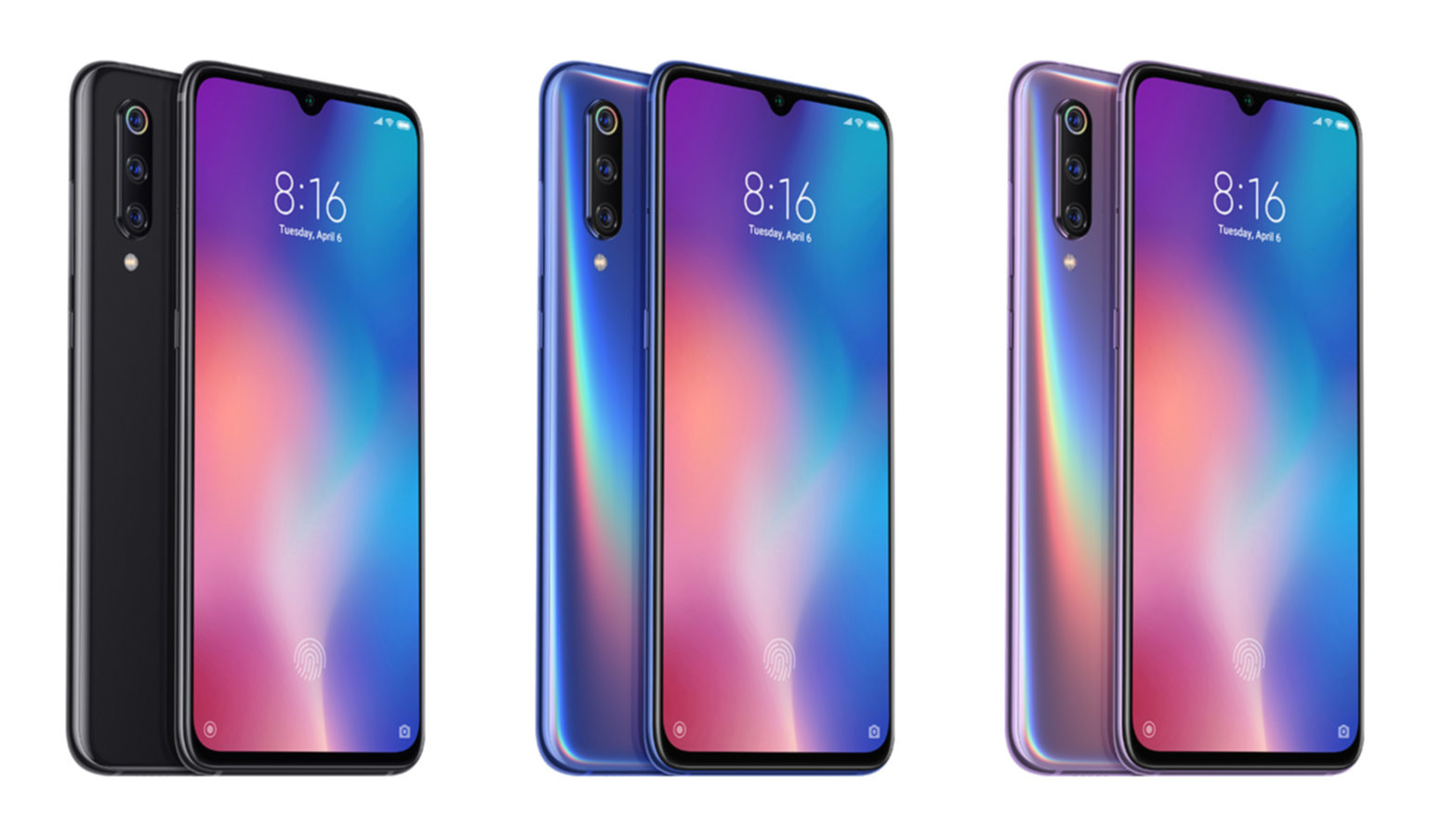 Piano black, ocean blue and lavender purple are all available in Global versions.
Piano black, ocean blue and lavender purple are all available in Global versions.
For two colours (blue, purple), this holographic light is a given, i.e. if the light is refracted at an angle, you can see special colours (especially at the edges).
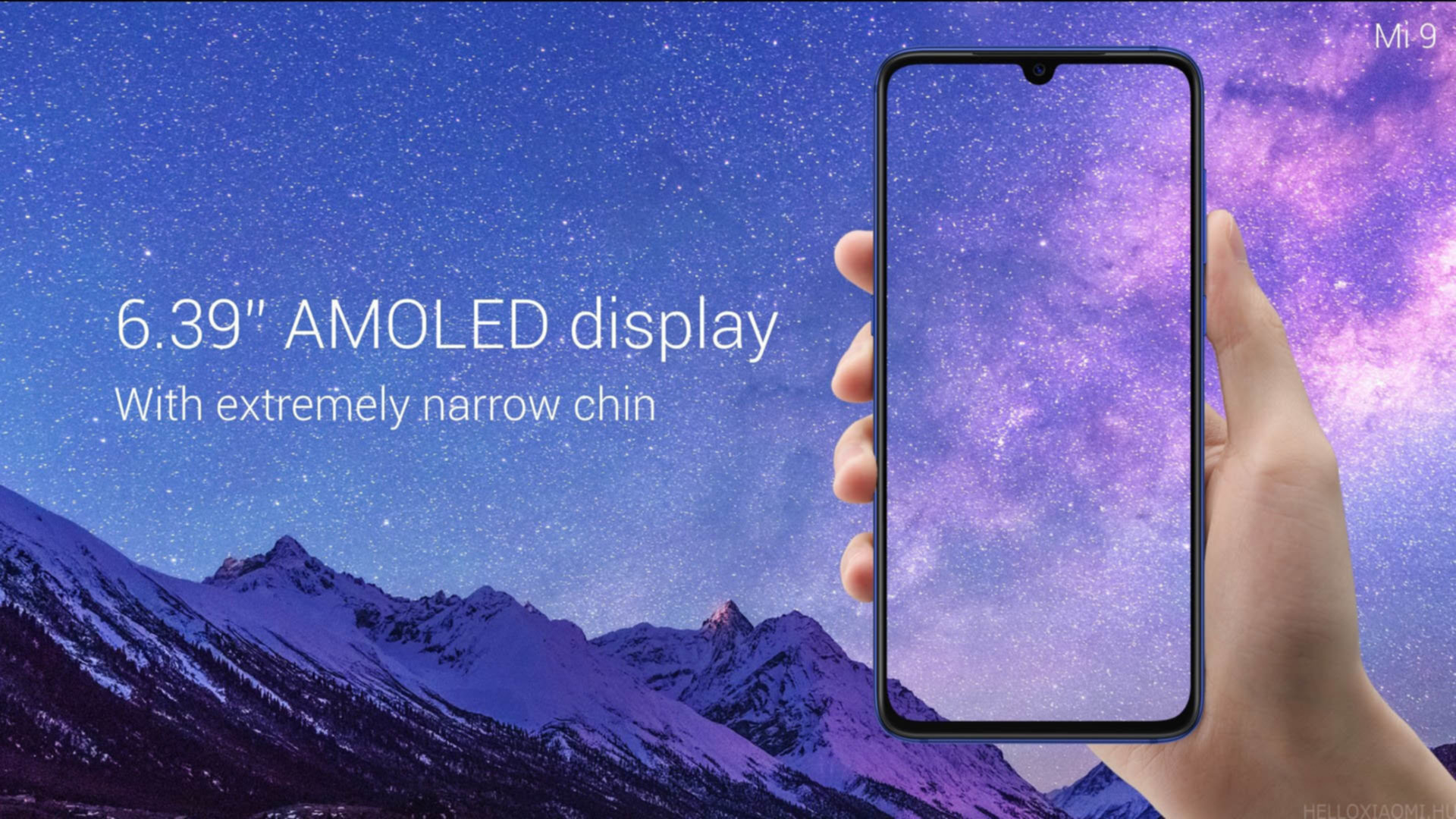 The front of the Mi 9 features a 6.39″ Samsung AMOLED panel with a waterdrop notch and 600 nits of brightness, with Gorilla Glass 6 protection. The display is equipped with a new generation optical fingerprint sensor, which is even faster and more accurate (supposedly with 25%).
The front of the Mi 9 features a 6.39″ Samsung AMOLED panel with a waterdrop notch and 600 nits of brightness, with Gorilla Glass 6 protection. The display is equipped with a new generation optical fingerprint sensor, which is even faster and more accurate (supposedly with 25%).
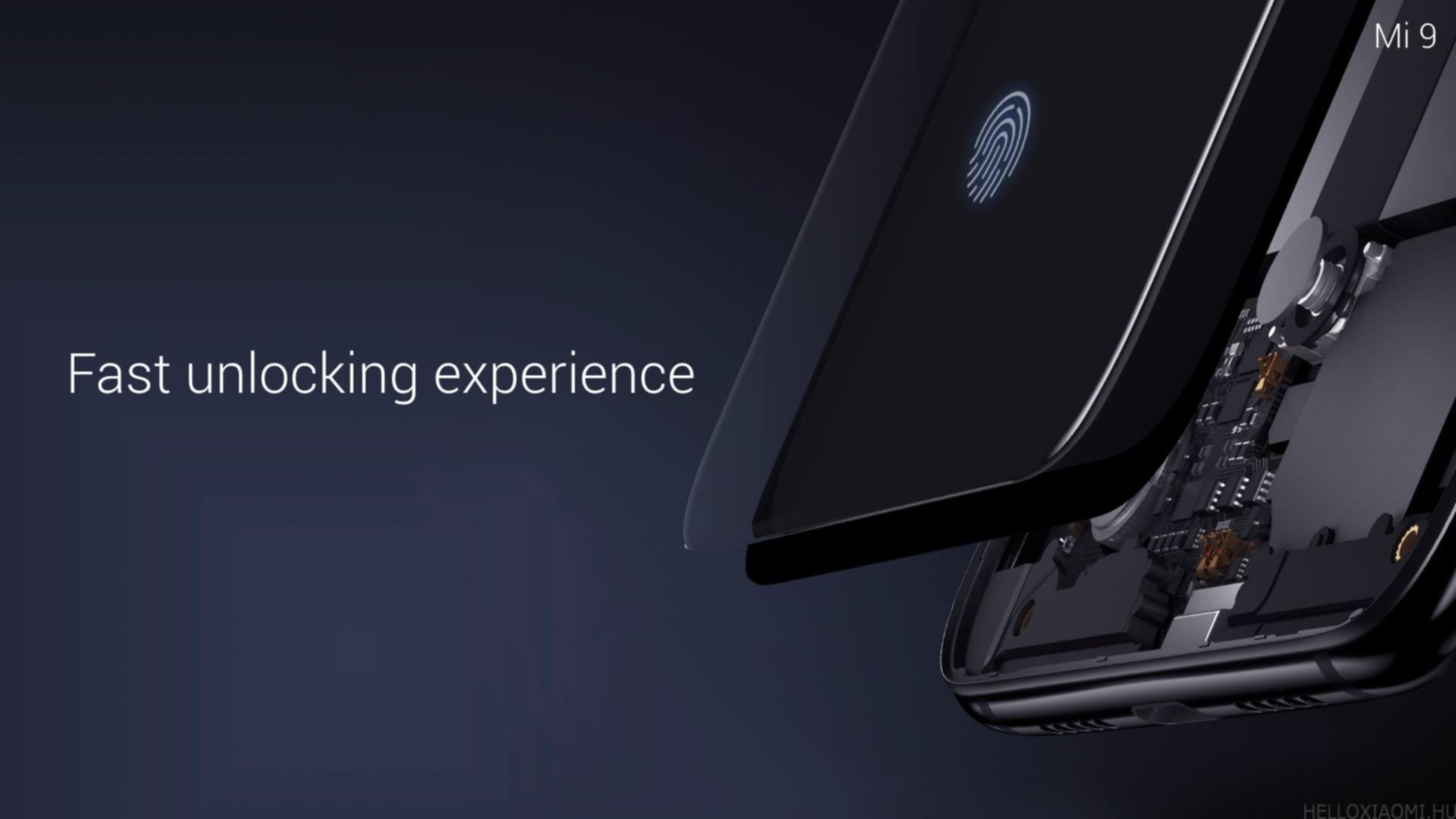
 According to Wed 9 the latest fast-charging development, which wireless unbelievable, Capable of charging up to 20W. The 20W has also been measured and certified by TÜV. With the QC 4+ charging head, available separately, a 27W charge is available.
According to Wed 9 the latest fast-charging development, which wireless unbelievable, Capable of charging up to 20W. The 20W has also been measured and certified by TÜV. With the QC 4+ charging head, available separately, a 27W charge is available.

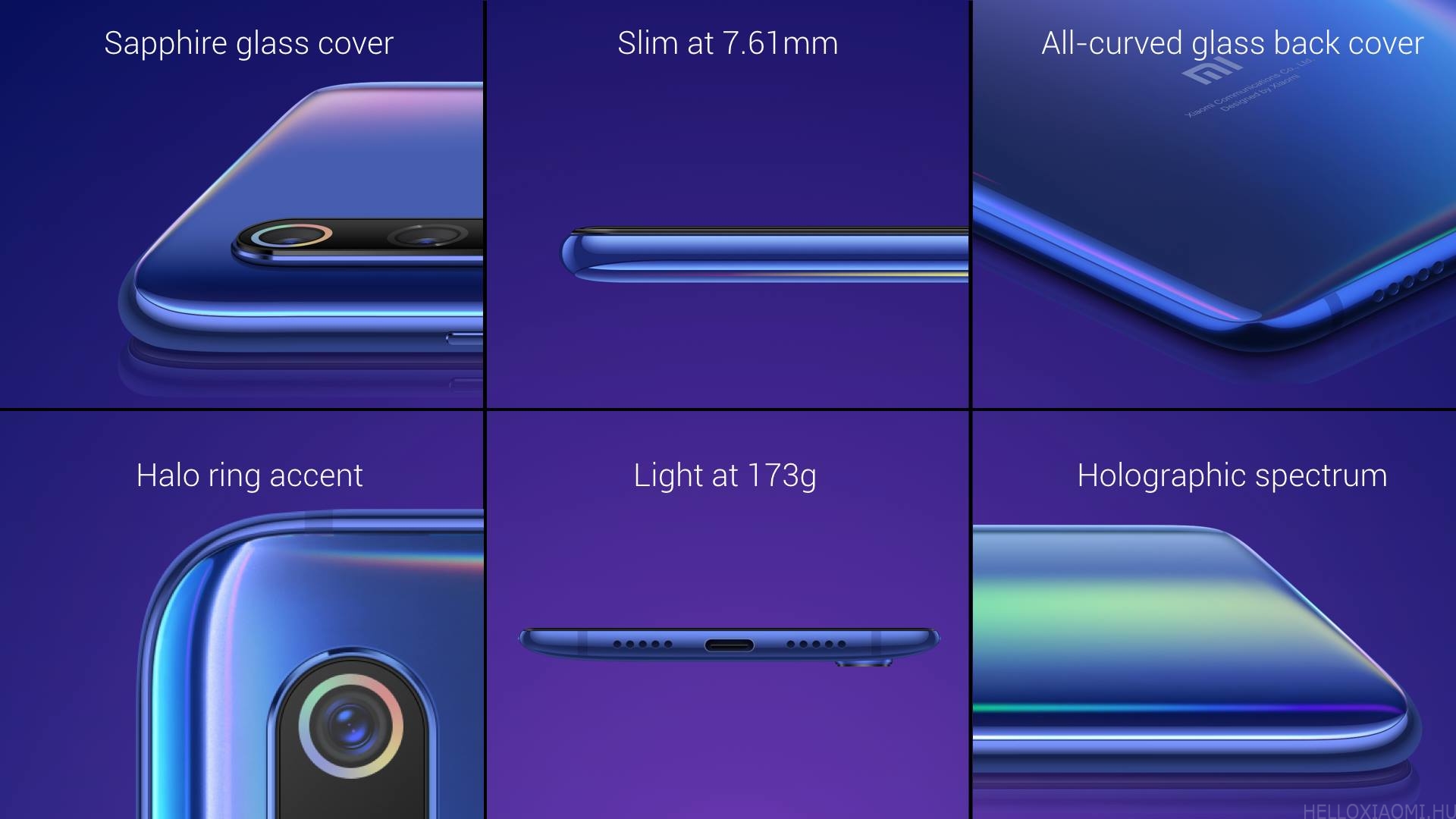 The processor is the Snapdragon 855 with Kryo 485 cores, which is measured to deliver 45% acceleration with lower power consumption.
The processor is the Snapdragon 855 with Kryo 485 cores, which is measured to deliver 45% acceleration with lower power consumption.
 The GPU is also noteworthy, with Game Turbo mode there isn't a game that won't run without a hitch.
The GPU is also noteworthy, with Game Turbo mode there isn't a game that won't run without a hitch.
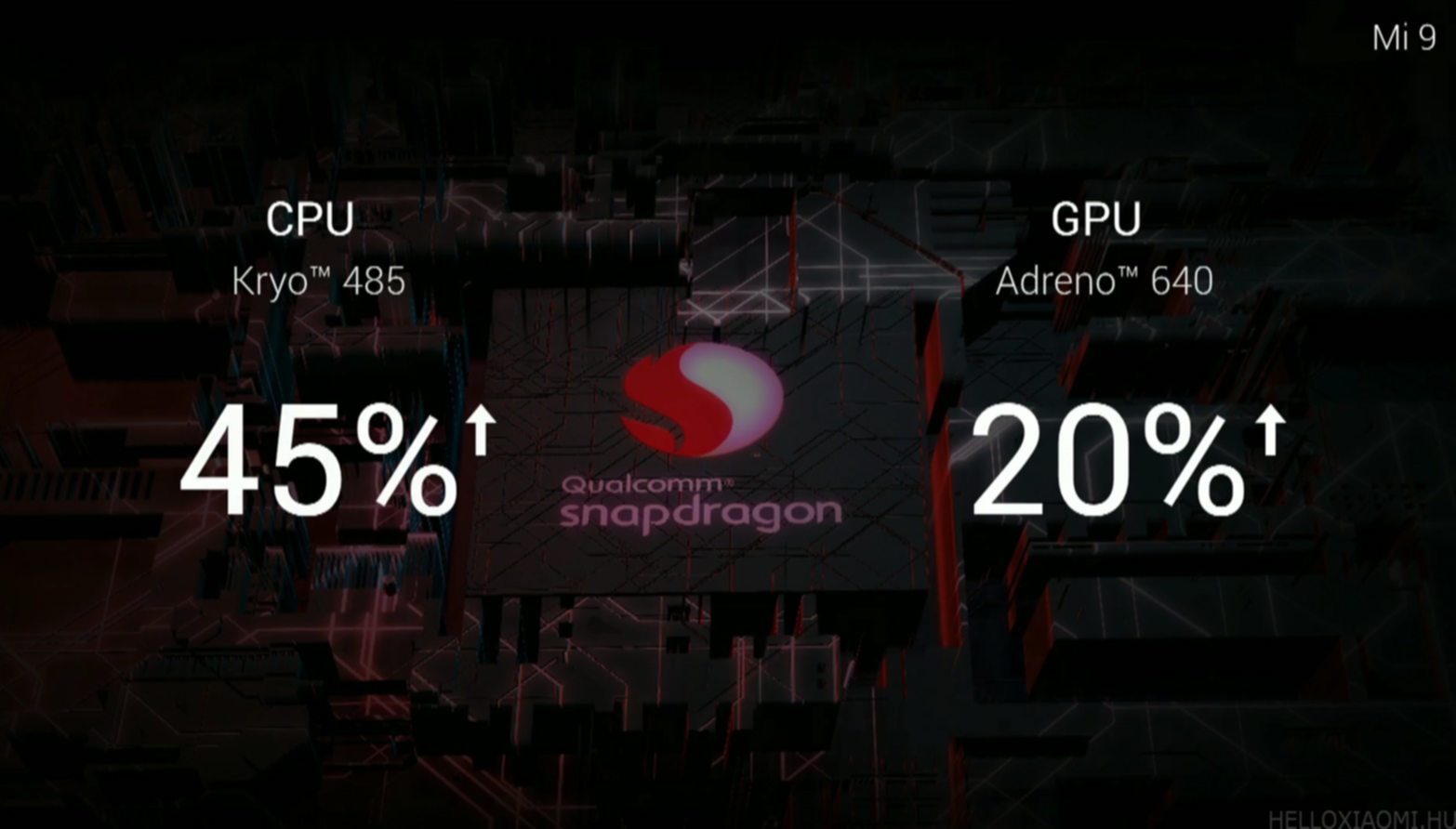 The SD855 is the best on the AIE mark, as it outperforms Huawei's Kirin 980 or Apple's A12 in artificial intelligence calculations.
The SD855 is the best on the AIE mark, as it outperforms Huawei's Kirin 980 or Apple's A12 in artificial intelligence calculations.
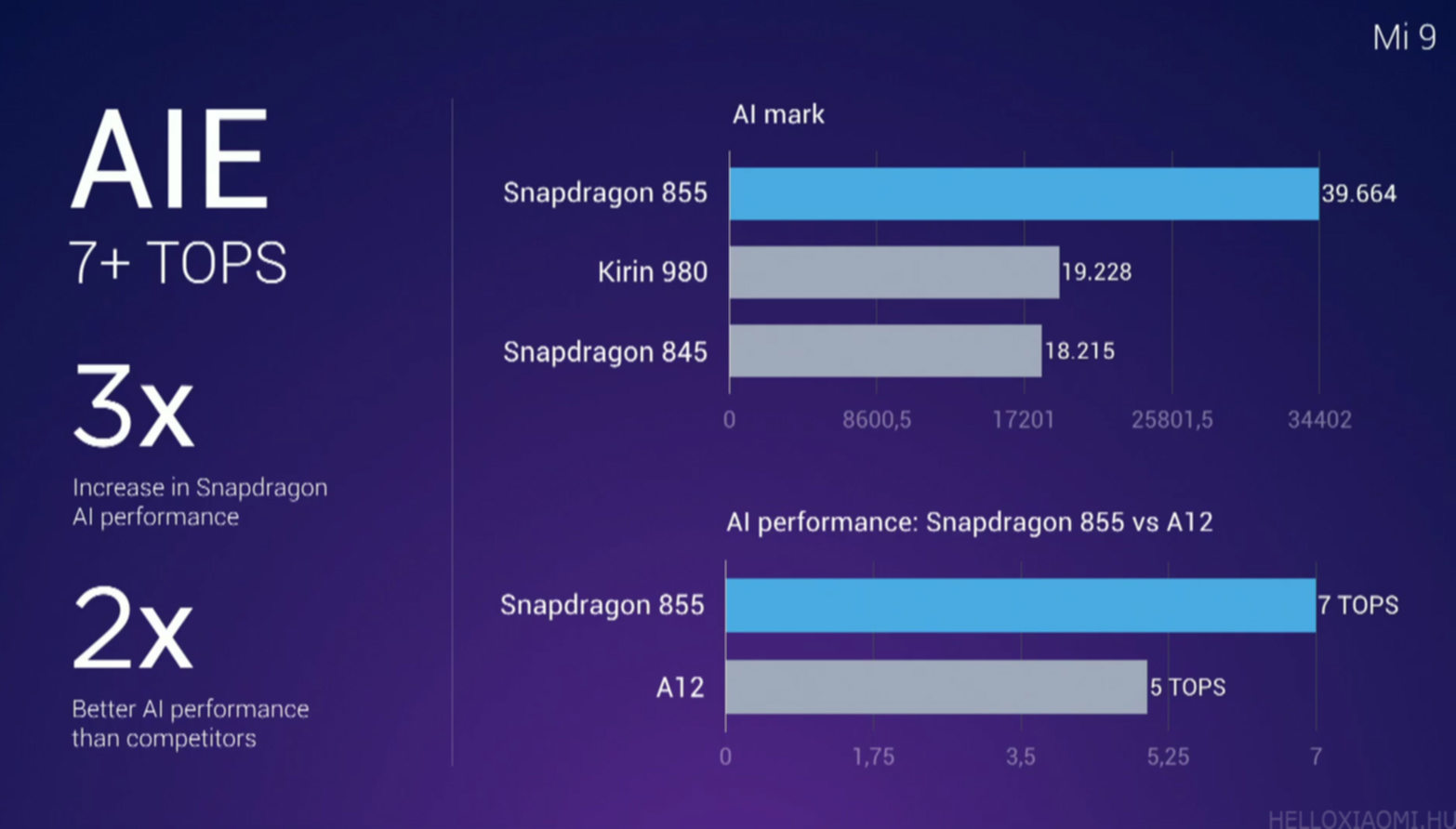 And in AnTuTu it scored like this:
And in AnTuTu it scored like this:
 In speed, the Mi 9 beats them:
In speed, the Mi 9 beats them:
Last year's models, this year the Mi 9 will probably be outsold by its successors.
Mi 9 battery
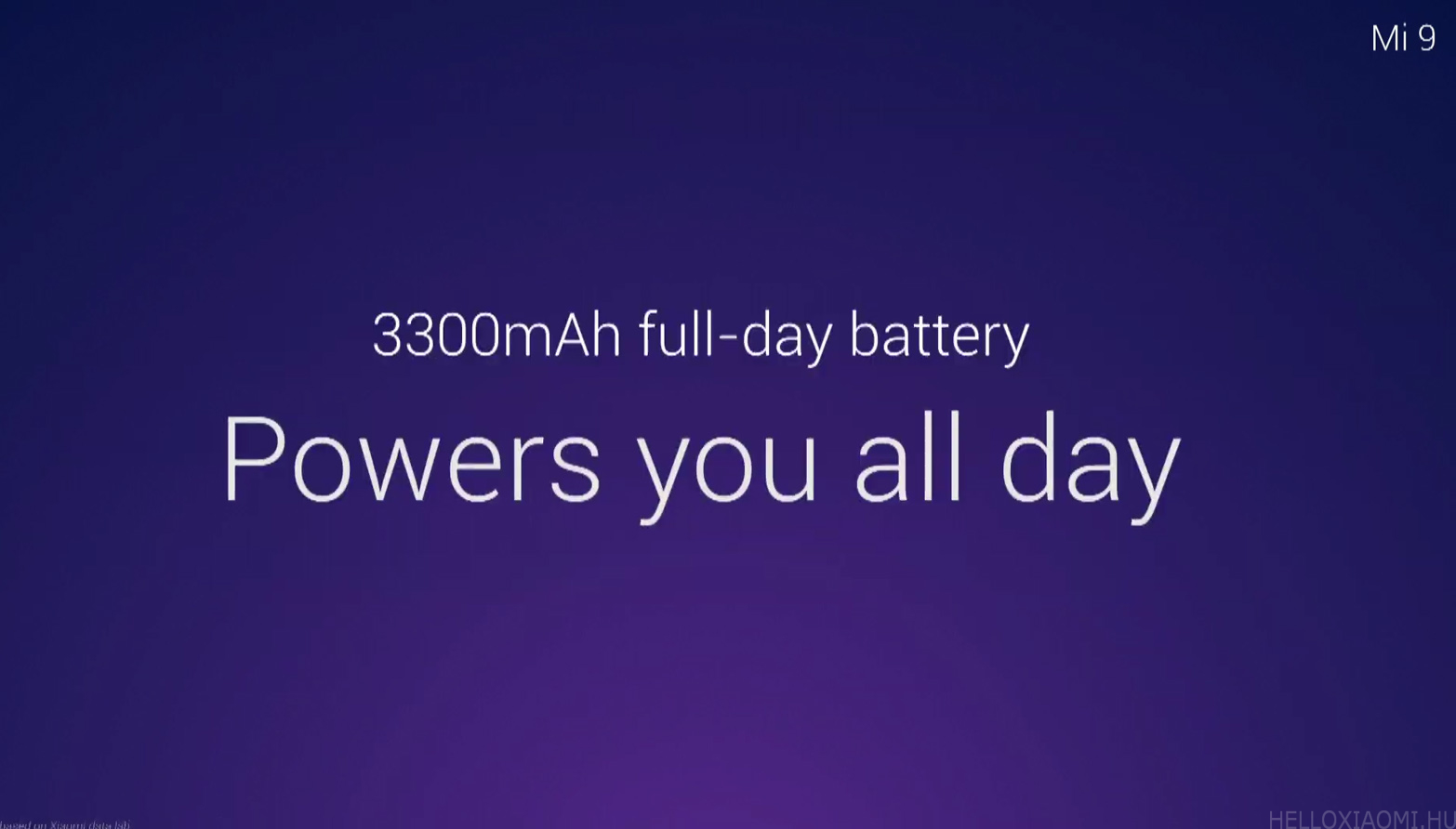 Many people judge only by the numbers, without reading how much technology has improved in a year. The 7 µm processor consumes less power than last year's SD845, so the 3300 mAh battery lasts 1 full day. Even with the increased performance, you can safely use it until the evening without even thinking about charging.
Many people judge only by the numbers, without reading how much technology has improved in a year. The 7 µm processor consumes less power than last year's SD845, so the 3300 mAh battery lasts 1 full day. Even with the increased performance, you can safely use it until the evening without even thinking about charging.
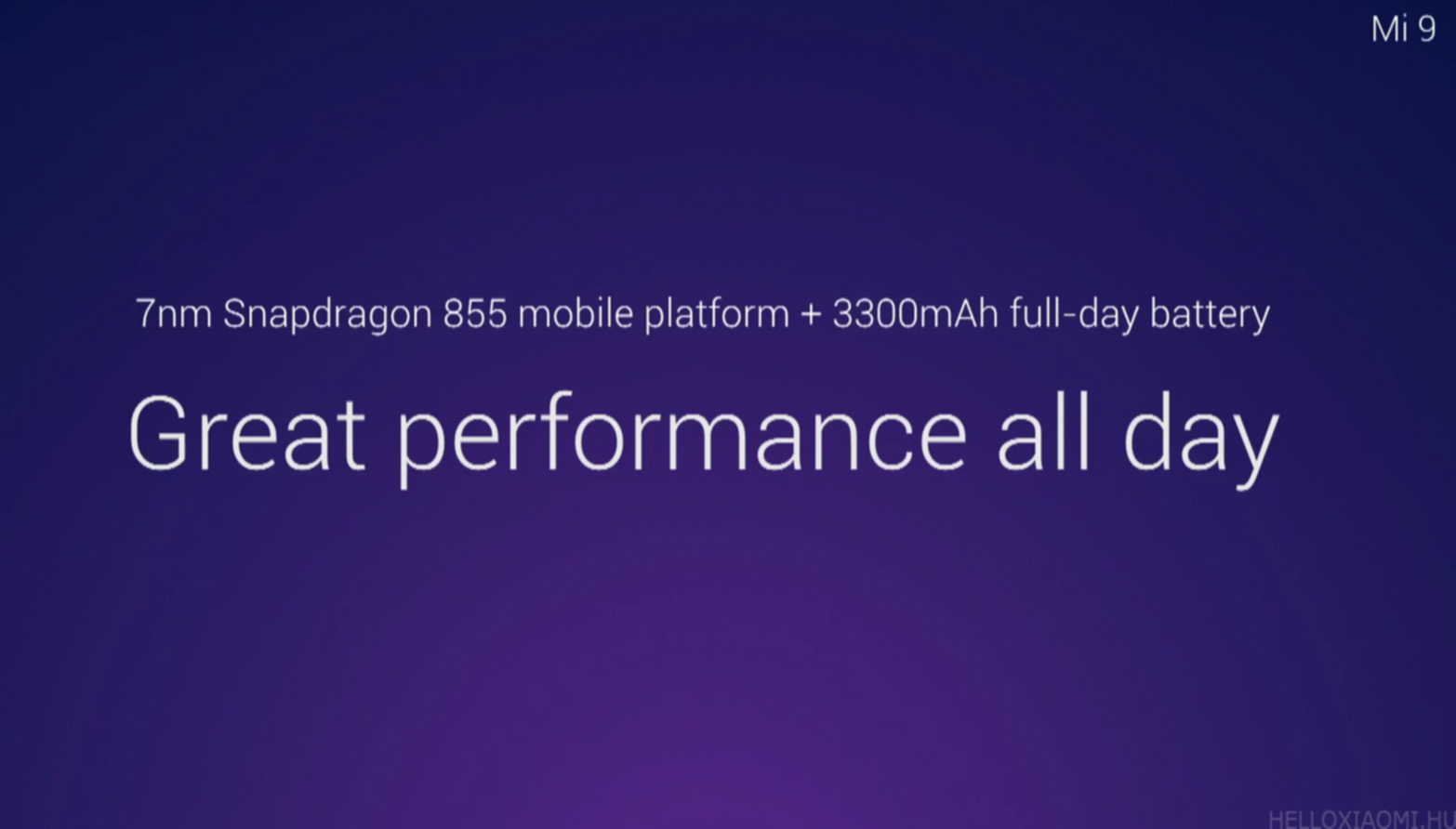 And here is the 20W fast charge
And here is the 20W fast charge
to charge your phone from zero in an hour and a half.
3 reasons why the Mi 9 is better than its predecessors:
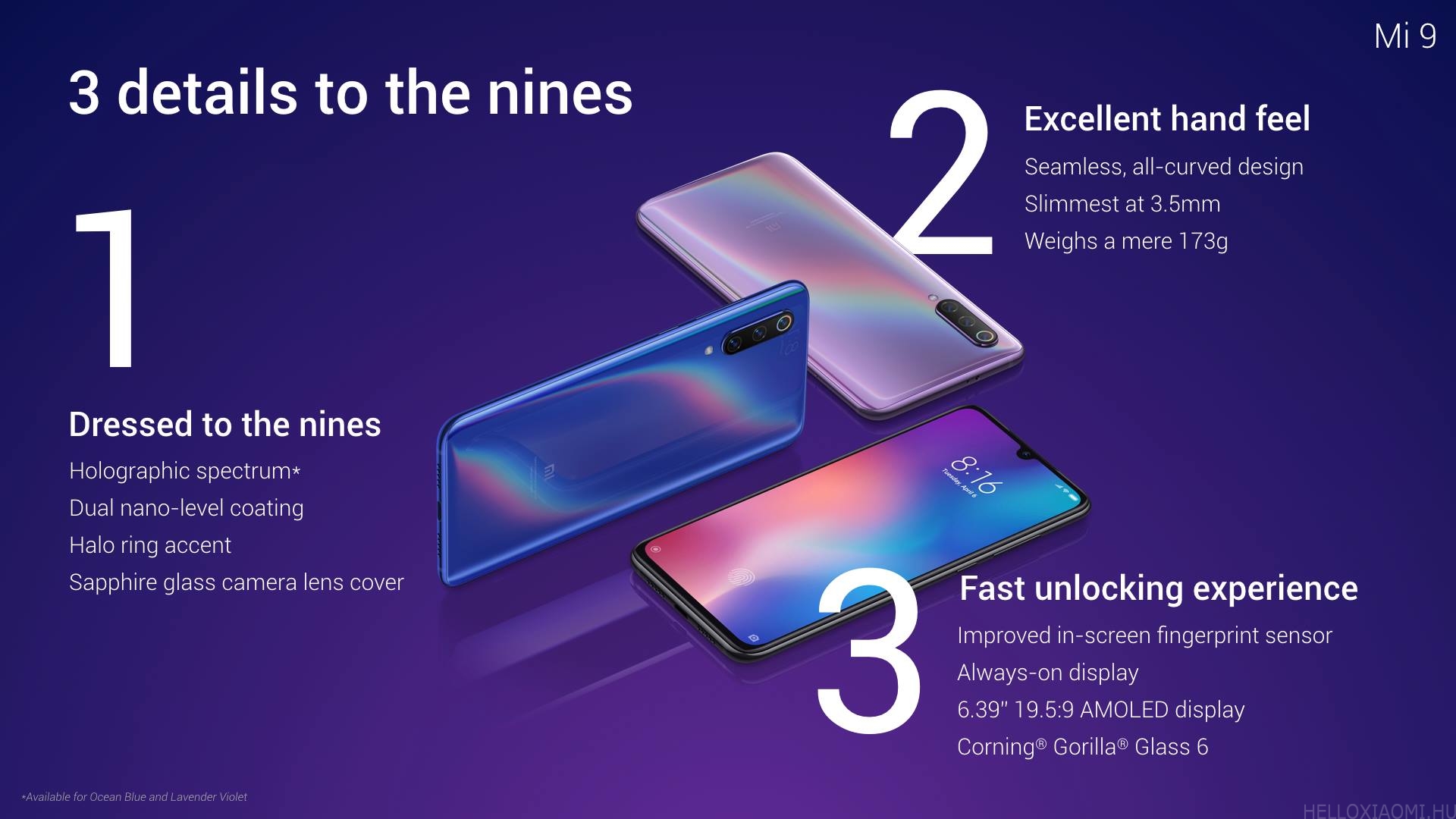 1. The most beautiful Xiaomi phone with special colouring, sapphire glass camera-lens protection
1. The most beautiful Xiaomi phone with special colouring, sapphire glass camera-lens protection
2. Thin, contoured shape with ideal weight.
3. Fast operation, quick security unlock, beautiful AMOLED display with the best protection.
3 reasons why the Mi 9 is the best buy if you want a Xiaomi smartphone:
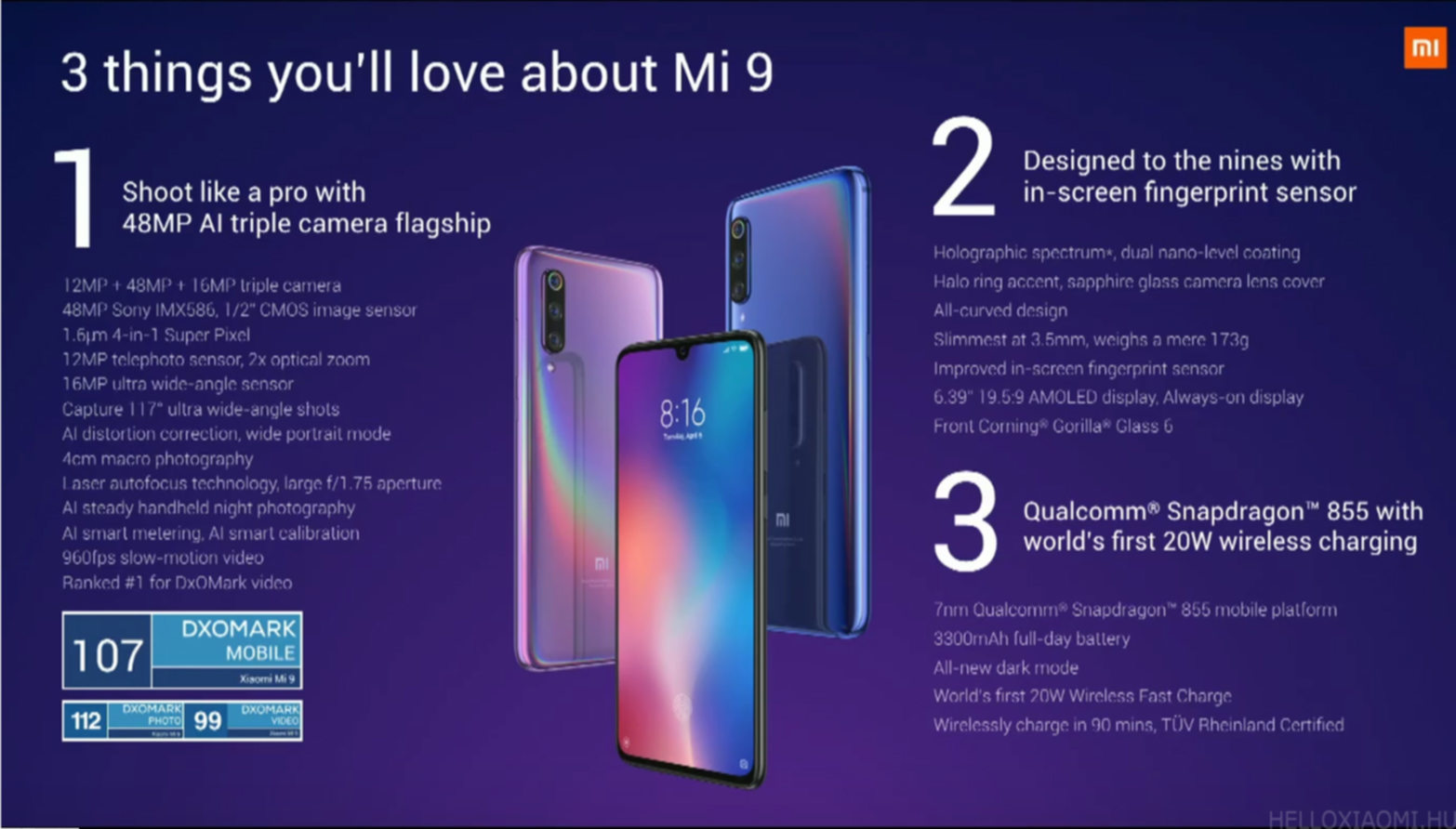 1. Brutality-quality triple camera, with the second-best performance and the best video ever measured on a smartphone
1. Brutality-quality triple camera, with the second-best performance and the best video ever measured on a smartphone
2. Unique design, quality use of materials, with adequate protection
3. With the most powerful hardware and the fastest wireless charging on the market.
Mi 9 price
 The cheapest phone in the field, while better than its competitors in many ways.
The cheapest phone in the field, while better than its competitors in many ways.
 However, the low price comes at a price, as the Global version has less memory than the one presented in China. We can buy the Mi 9 through official channels with B20 support only in 6+64GB and 6+128GB in 3 colours.
However, the low price comes at a price, as the Global version has less memory than the one presented in China. We can buy the Mi 9 through official channels with B20 support only in 6+64GB and 6+128GB in 3 colours.
- Mi 9 (black, blue, purple) 6GB + 64GB : 142.000 Ft
- Mi 9 (black, blue, purple) 6GB + 128GB : 159.000 Ft
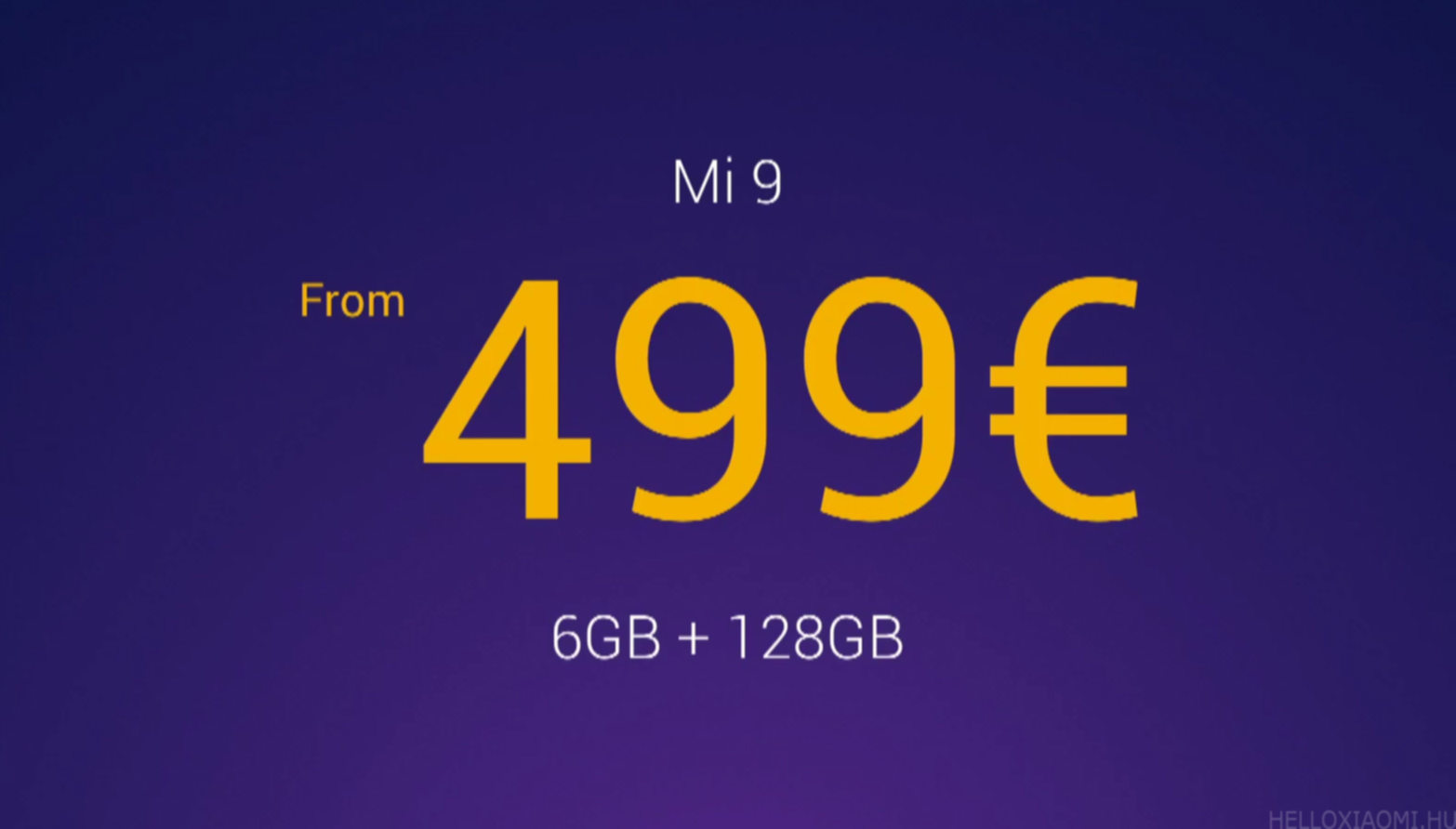 This makes it the cheapest flagship of the current TOP 4 brands on the market (still)
This makes it the cheapest flagship of the current TOP 4 brands on the market (still)
 On sale from 28 February, available from the beginning of March in Mi Stores and other online and technical stores.
On sale from 28 February, available from the beginning of March in Mi Stores and other online and technical stores.
So that's it, for now, neither the 8GB version nor the Mi 9 Transparent Edition with a better camera and a special transparent back not available to buy in the Mi Store, as the Mi 9 SE is completely out of official European sales (again)
According to our information, if the trio becomes available in China, all three models (available) will keep all versions of the xiaomishop.hu webshop.
For those who want more memory, the Mi 9 SE, or a clear back, better camera, 12GB RAM version, is worth waiting for. While there won't be a B20 in these, English will be solvable, just like the current Mi MIX 3 Chinese variants. And because of the 24-month Hungarian warranty, you should consider hunting for coupons from known Chinese webshops, or buying from a known domestic webshop that hasn't just started, and you can even contact them in person if you have a problem.
And the event closed with a sadly not Mi Bedside lamp 2 global version, only the white and colour versions of the Mi LED Smart Bulb have been announced.
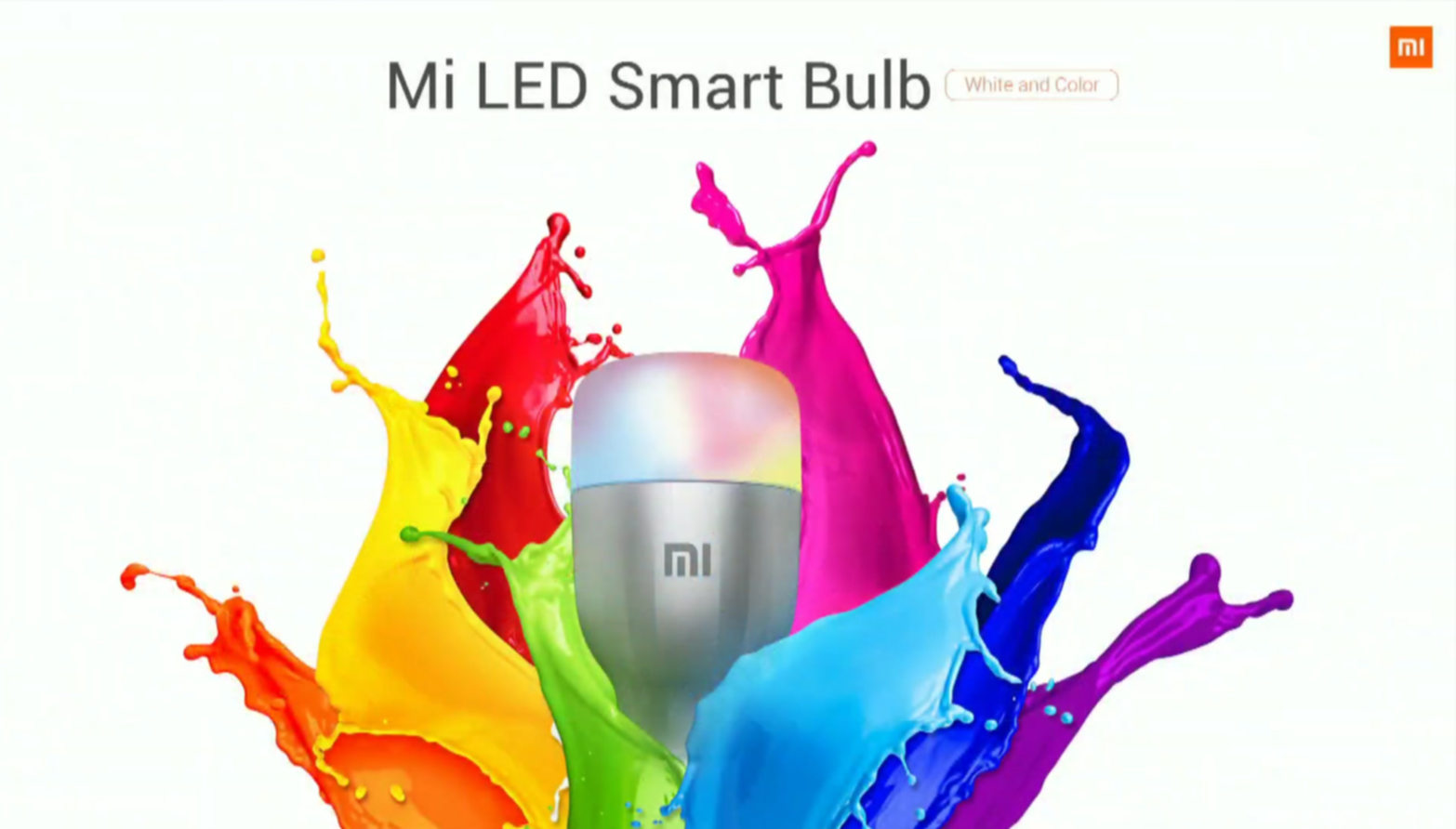

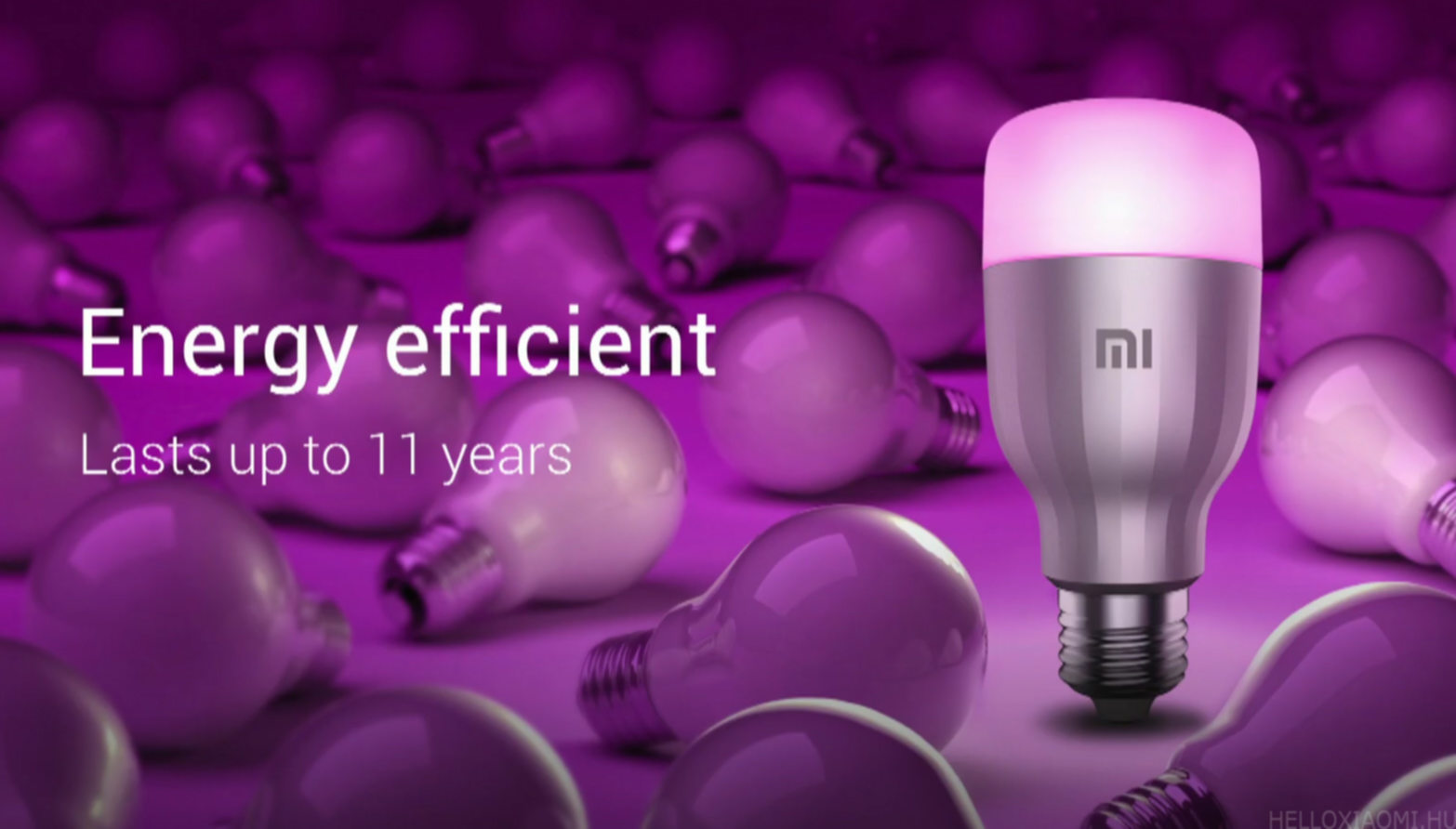 Price compared to an average smart bulb (which costs 16e Ft) only 6400 Ft.
Price compared to an average smart bulb (which costs 16e Ft) only 6400 Ft.
In addition to Mi Home, integration is also provided for Google Assistant and Amazon Alexa users, with voice control support.
If you're just looking for a cool/warm white tone, here's the Philips Wi-Fi E27 white smart light bulb, also from Google, and with Alexa support
Price around 3200 Ft.
So 4 products were presented, at very reasonable prices.
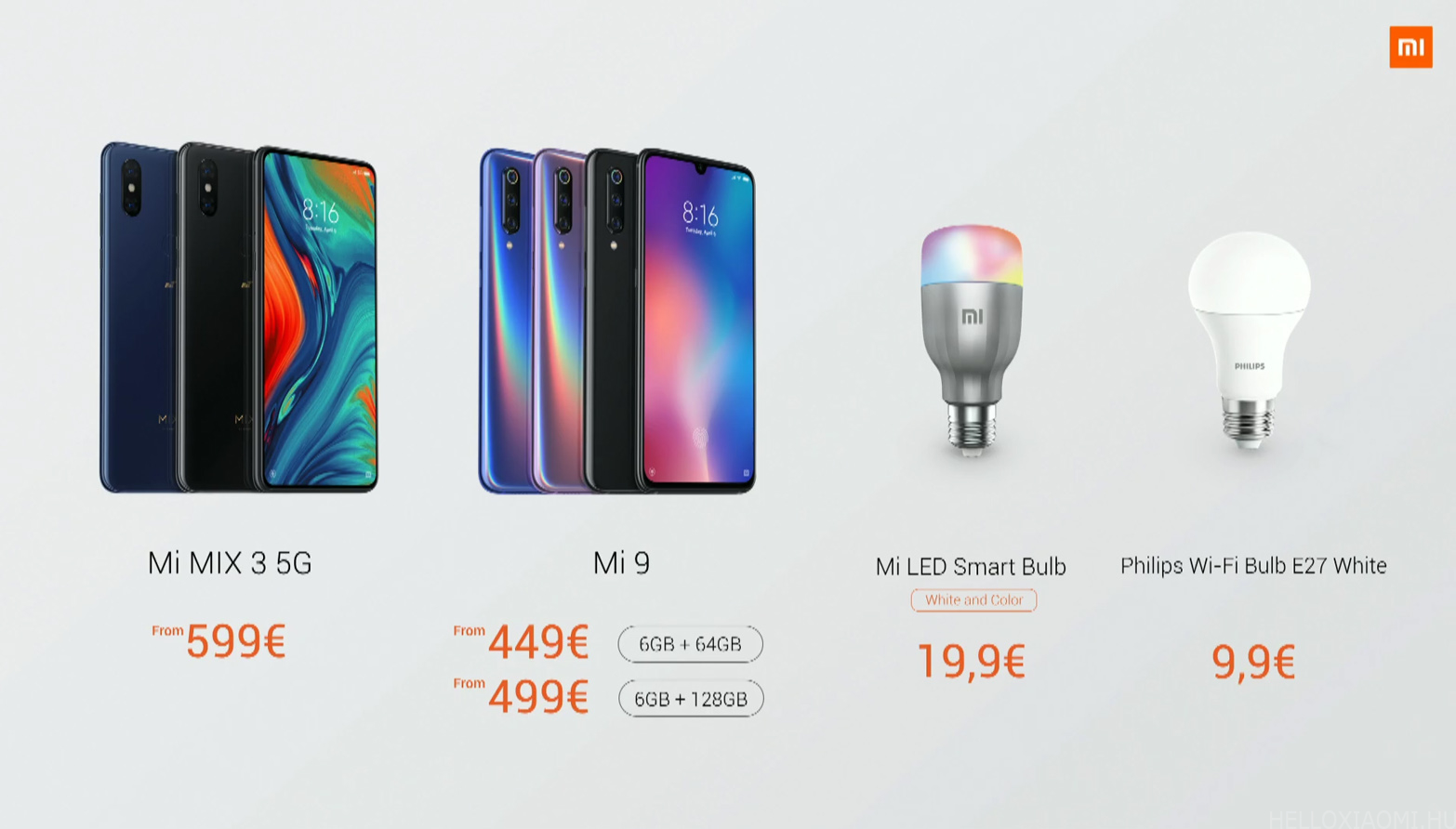 So 2019 is the year of 5G at Xiaomi. Let's hope that the next 10 months will be full of new features and that we can test all the devices in person. :)
So 2019 is the year of 5G at Xiaomi. Let's hope that the next 10 months will be full of new features and that we can test all the devices in person. :)

















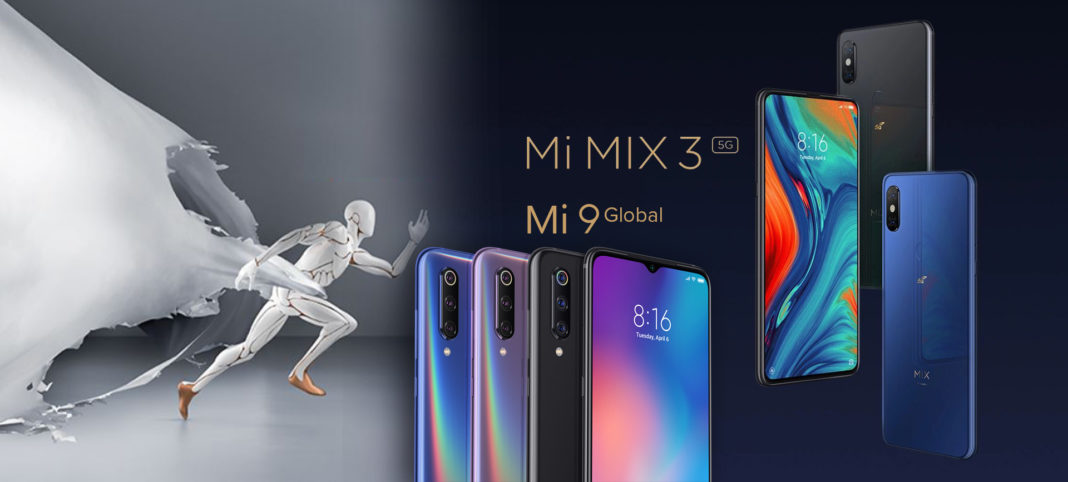


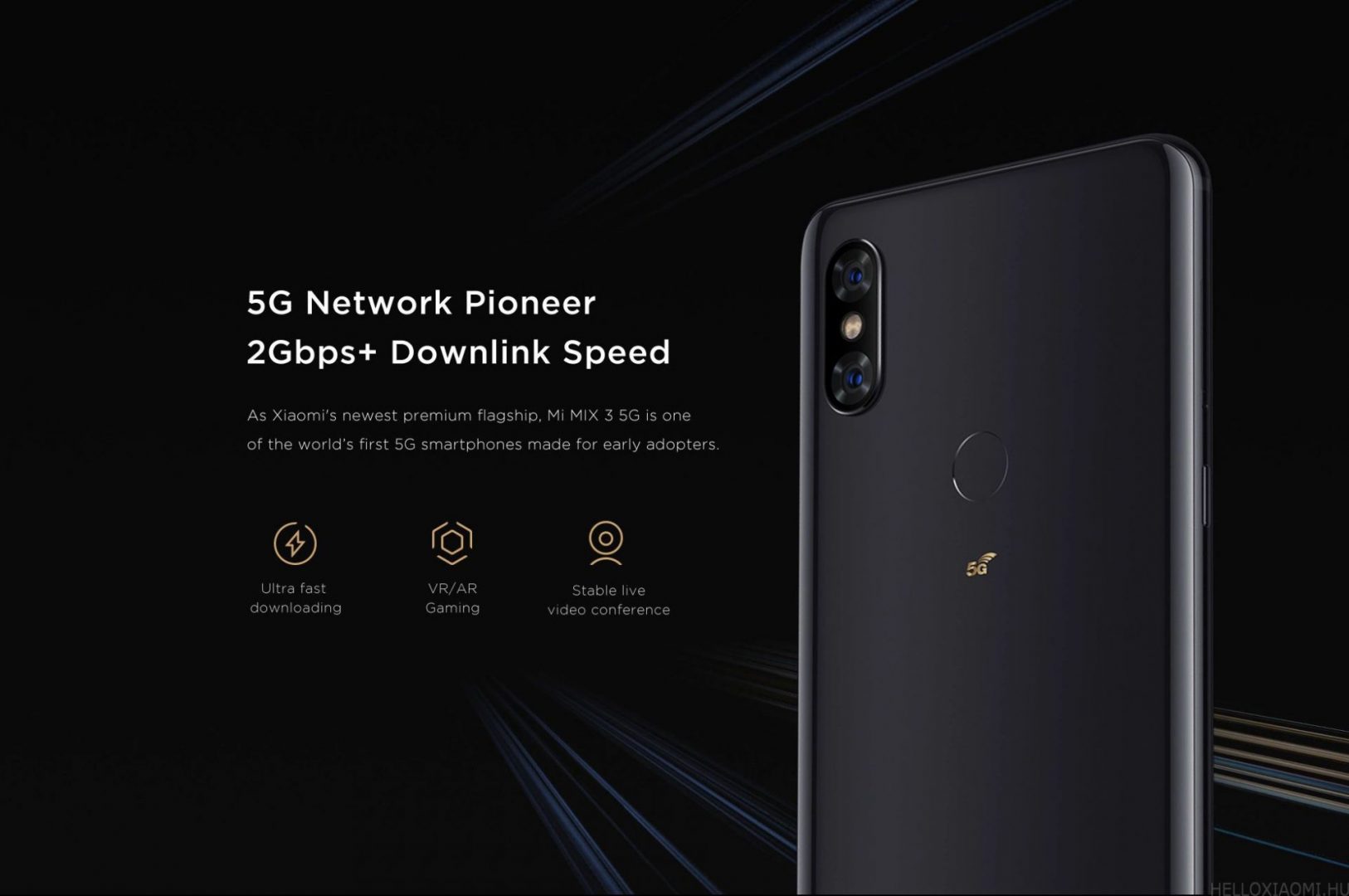







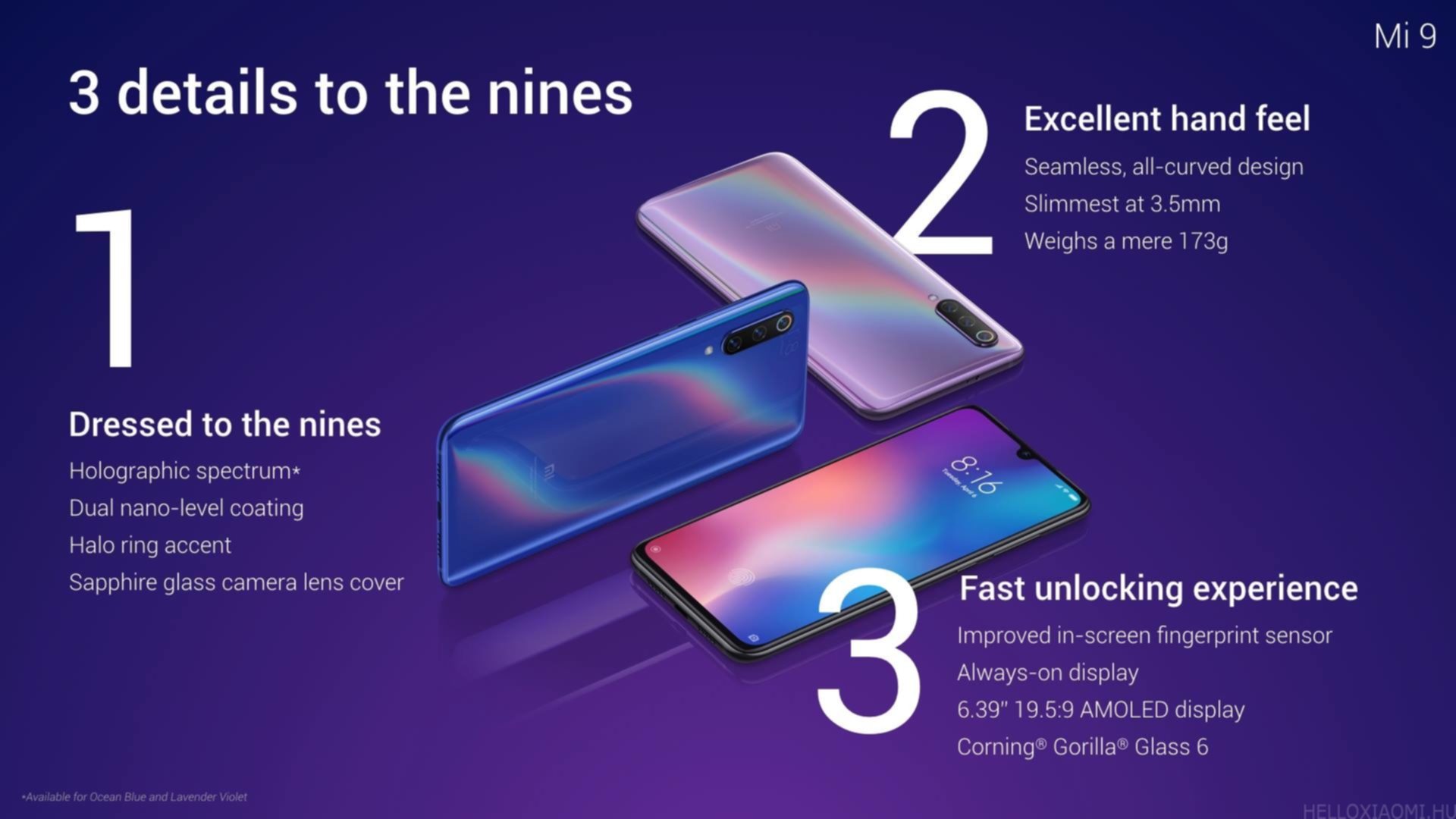

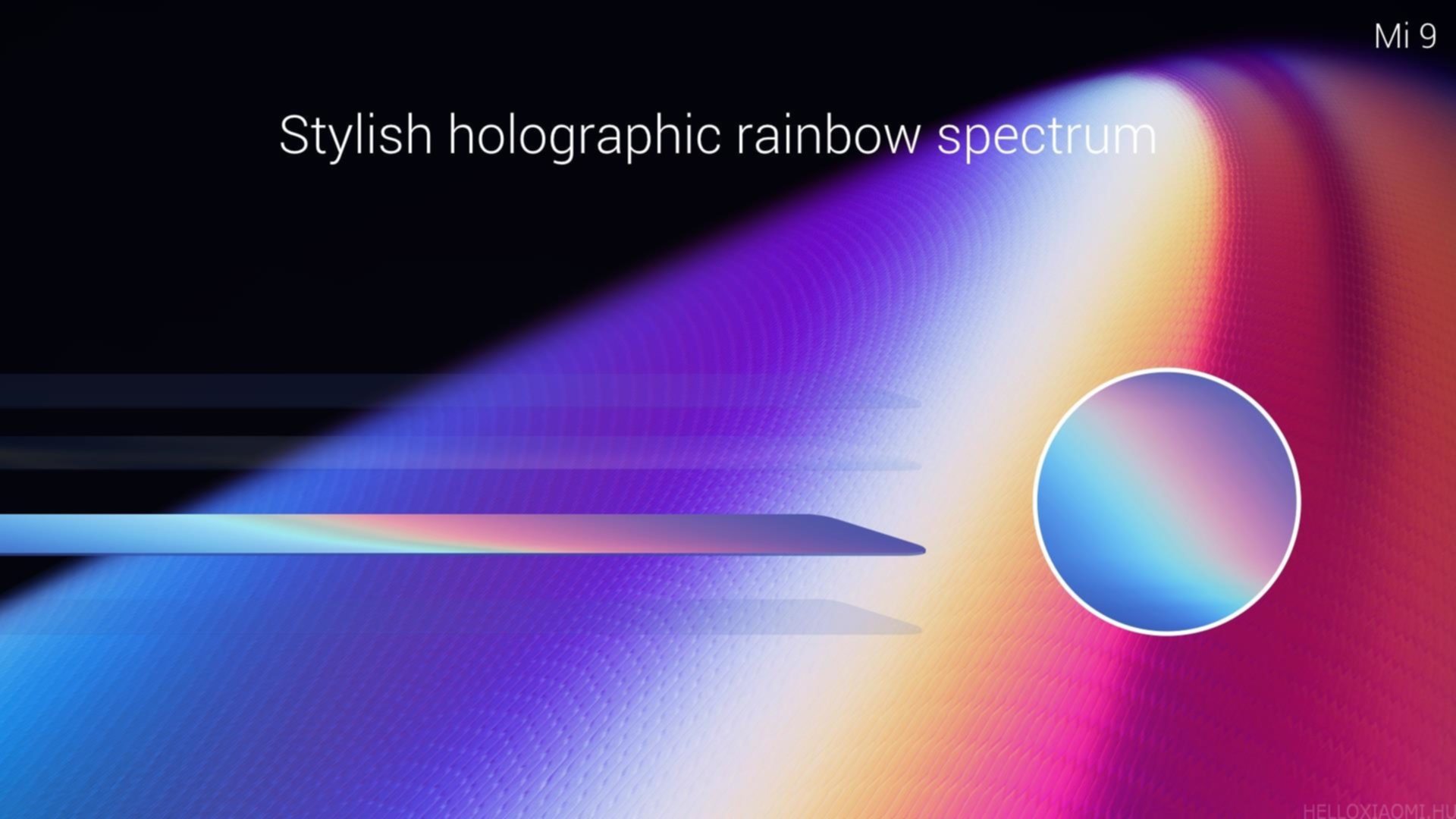
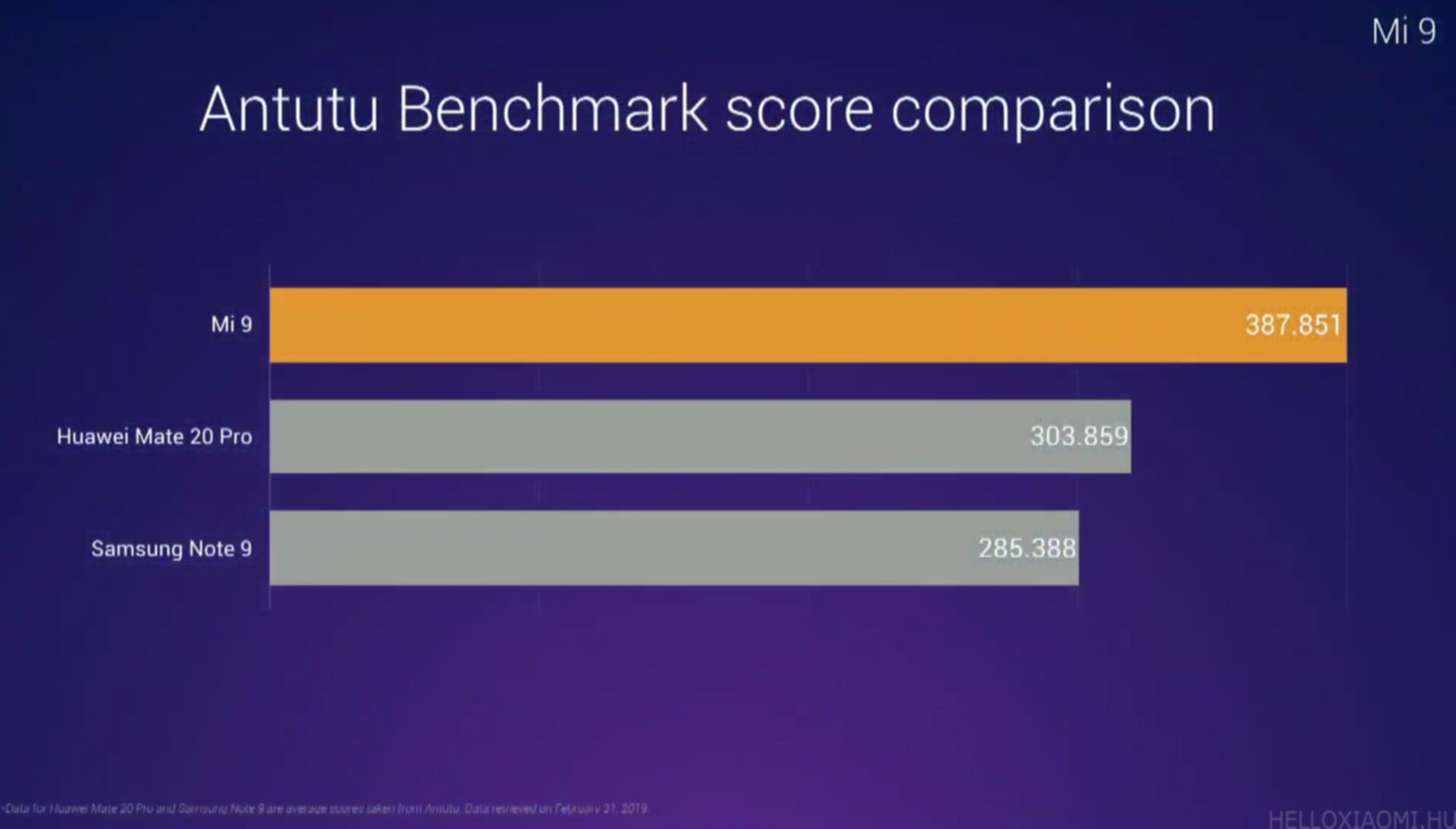
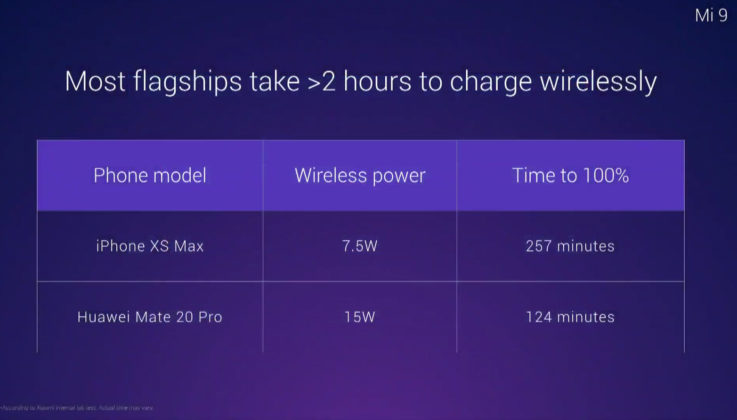
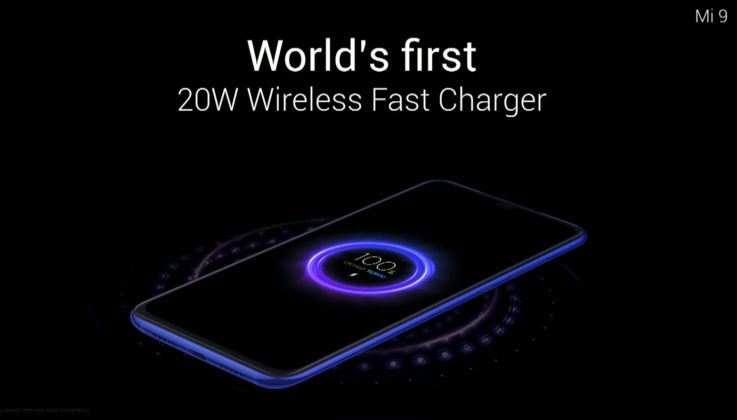
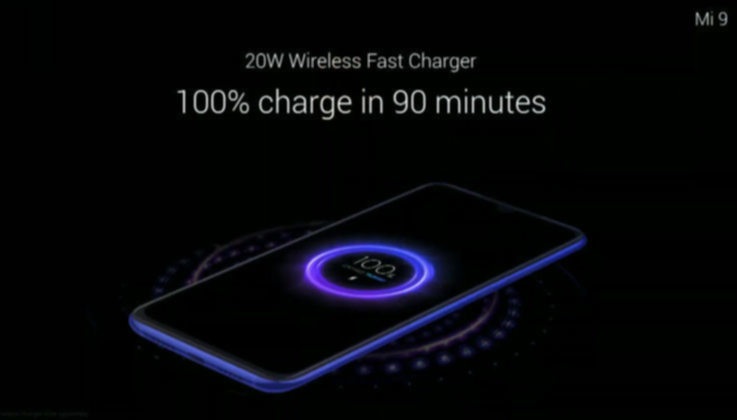

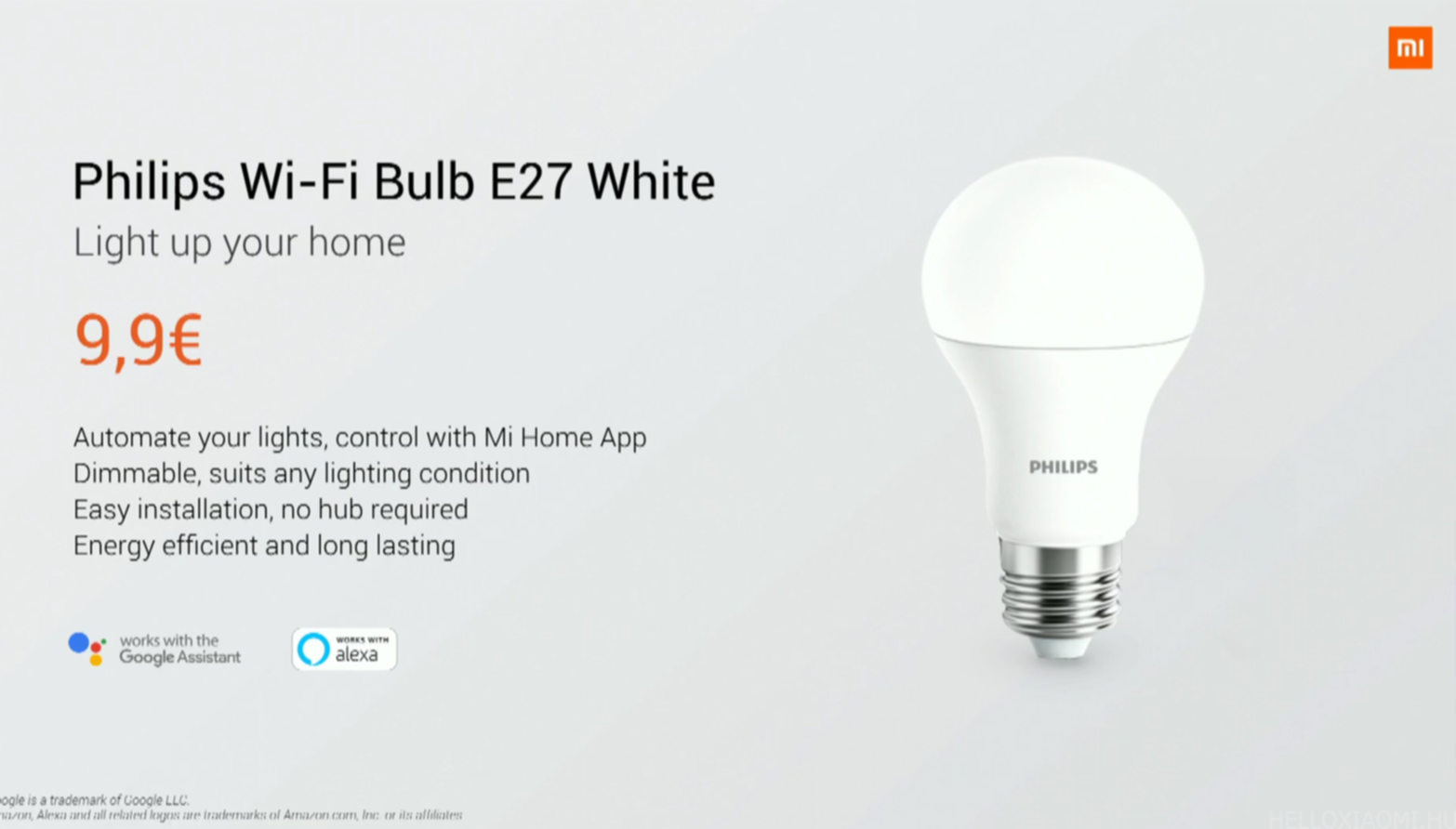
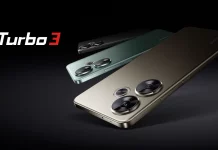
![[148] HyperOS heti hibajelentés](https://helloxiaomi.hu/wp-content/uploads/2024/04/hyperosbugreport148-218x150.webp)
